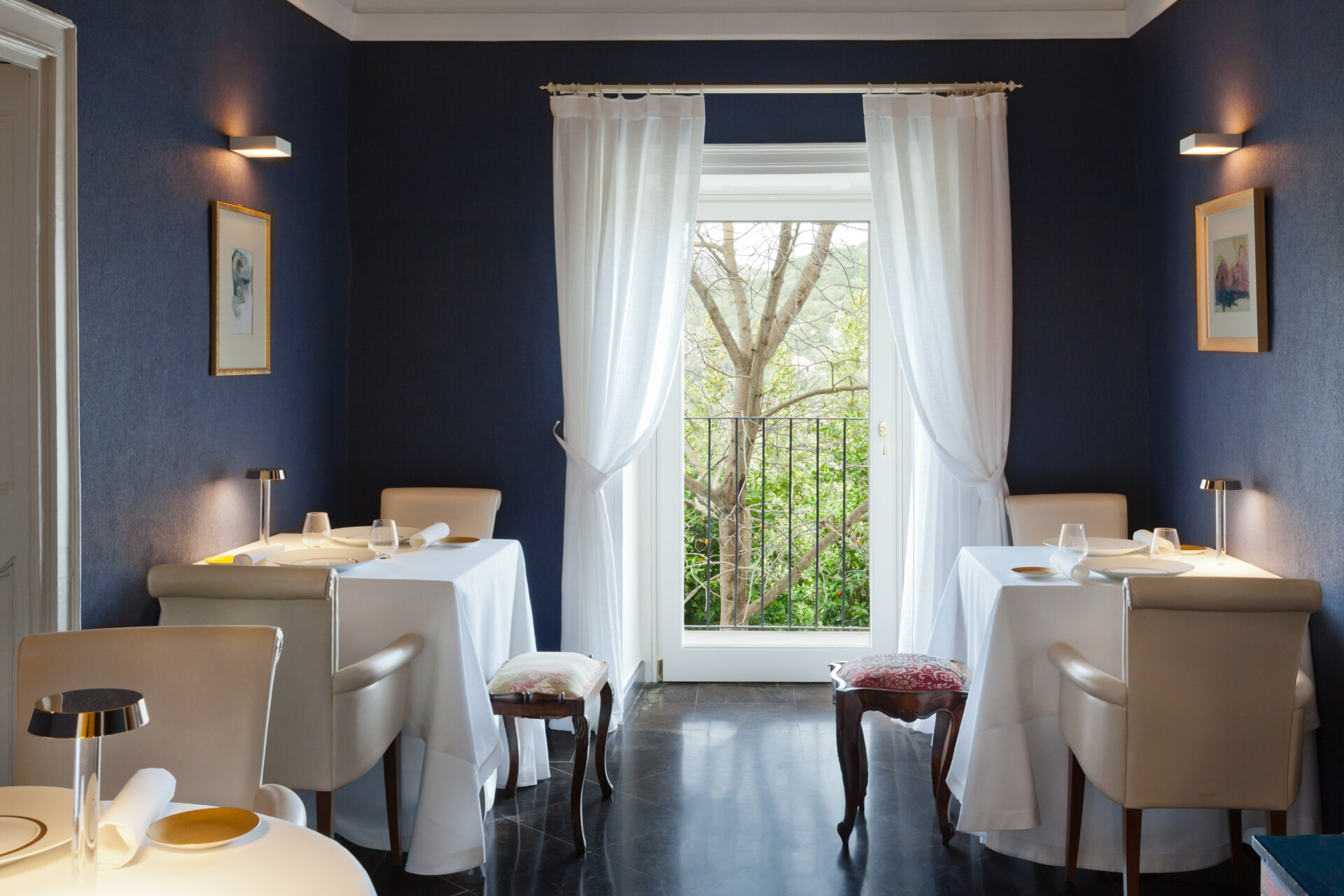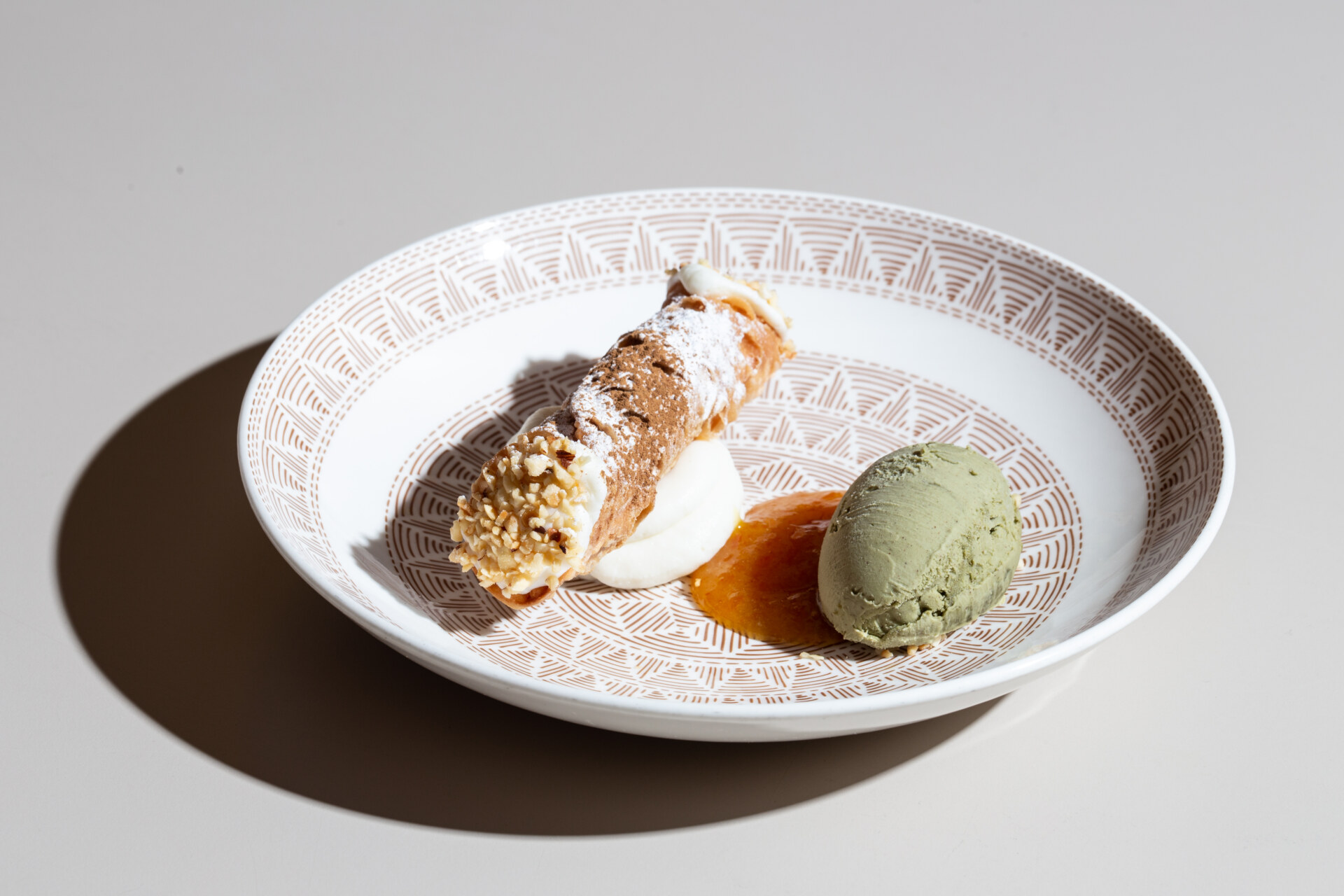Just open a map, Sicily is the heart of the Mediterranean–geographically and, for centuries, politically too. The sea that now divides Europe from Africa and the Middle East, a frontier between states, a natural as well as a cultural boundary to be defended, has been a point of conjunction since a good 6,000 years before Christ. Cradle of the civilizations that have thrived on its shores, united by a sea “in the midst of the lands” (as its very name implies), the Mediterranean has been above all a source of wealth and trade, a reservoir of resources, and the globalization of what was the then “known world.” In its center, Sicily, an island traversed, inhabited, and contested since time immemorial, so much so that it has been sedimented in Greek and Roman ruins, Baroque palaces, Arab ingredients, as well as Byzantine and Bourbon recipes–a summary of Europe’s history. It is the past that one breathes as one walks the streets and sits at the table, and it must be known to truly understand the identity of this land.
To explore it one could read a book… or one could choose a more evocative narrative in the language of gastronomy by Ciccio Sultano, a renowned Sicilian chef who attracts gourmet enthusiasts from all over the world to the little town of Ragusa. His dishes are a compendium of the history of Sicilian dominations and, at the same time, a tale of today’s Sicily, its producers, and its potential. “Sicily is more than a region; it’s a nation, as big as some European states. The life of a cook is not enough to tell the whole story,” he says, but he has been trying relentlessly for more than 20 years.
On a downtown street with a view of the 18th-century church San Giorgio’s dome, his restaurant Duomo has found a home. Open since 2000, the two-Michelin-starred restaurant is located within Palazzo La Rocca, an elegant bourgeois home, in an apartment converted into intimate and elegant dining rooms. (These same walls, in a former life, served as the set for the film Divorce Italian Style starring Marcello Mastroianni.) We are in the heart of Ragusa Ibla–a village perched on a hill and a UNESCO heritage site for its concentration of finely decorated churches and palaces. Just a stone’s throw from Modica, the city of chocolate, and Noto, the pearl of Baroque, Ragusa still remains a little off the beaten track for tourists, but if you feel like you’ve seen it before, it’s because it was here that many scenes from an Italian screenplay that made the rounds on international TV were set: Commissioner Montalbano. The fictional town of Vigata created by Andrea Camilleri, the writer of the mystery novels from which the series is based, was set here, and the square and streets that can be seen on screen are precisely those of Ragusa Ibla.
An architectural jewel dubbed “the island within the island,” Ragusa Ibla is at the center of a vast agricultural territory where fruits, vegetables, and cheeses are produced: excellences such as caciocavallo Ragusano, extra-virgin olive oil from the Monti Iblei, Carota Novella di Ispica (a bright orange carrot), and wines such as Cerasuolo di Vittoria. Closer to Malta than to Messina gastronomically, Ragusa is also a meeting place for the two macro cultures that have influenced Sicily: on the one hand, the eastern one of Hellenic and Arab traditions and, on the other, the western one with the legacies of the Normans and the Swabians.

Duomo © Benedetto Tarantino
Of Sicilian cuisine few dishes are known, and the ones that are have almost become homogenized stereotypes, such as caponata, cannoli, granite. In reality, the unique cultural stratification of the island has resulted in a great culinary difference between Catania and Palermo, between east and west. And the difference lies not in the diatribe between arancin-o or arancina-a (male or female depending on the area), but a history more than 2,000 years deep. “Romantically we can say that Sicily is an arancino: the rice and saffron are the Arabs, the shredded meat that becomes ragout with the French, the red tomato of the Spanish, the cheese of the Greeks, a layering enclosed by a bread crust,” Ciccio explains to me.
Centuries before Christ in fact, the Greeks brought olive trees and vineyards, the Romans wheat and pasta. Before the year 1000, the Arabs introduced couscous, rice, spices, citrus fruits, almonds, pistachios, granitas, and brown sugar, which would become centuries later Pasta Reale and Frutta di Martorana. The Jews are credited with the use of offal and dishes such as bread with spleen, which is eaten in Palermo, while the very Catholic Normans arrived in the 9th century with lean cooking (a symbol of purification), codfish, and straightforward recipes such as blancmange. The Spaniards left the pan di Spagna (sponge cake) and then from the Americas imported chocolate, tomatoes, and recipes popular in eastern Sicily such as impanate–dough stuffed with various ingredients like tomato, cheese, salami, and olives–very similar to Spanish empanadas. If pesto is made in Trapani as it is in Genoa, it is because of sailors, and in the 18th century, the spread of monsù (monsieurs, or French cooks who were fashionable at the time) meant the introduction of complex recipes such as timballi and cassate, as opulent as the noble courts. The Bourbons and contacts with Naples made pizza widespread.
The island is rich in diversity at the table, in recipes, and in flavors. Even dishes widespread across the island are still different: in Palermo, the pastry is sweeter and the ricotta in cannoli is stronger and made with sheep’s milk, while in Catania, they use less sugar and cow’s milk ricotta; caponata in western Sicily is sweet and sour and has raisins and almonds; in the eastern part of the island, it is made with more tomato, pine nuts, and basil. “What for many cultures is strange, for us is everyday; like sweet and sour, or bitter, sweet, and salty all at once. A mixture of flavors, cultures, interesting moments of great complexity,” Ciccio explains.

Cannolo © Melissa Carnemolla
“Our tale embraces millennia of history, ingredients, and recipes that have stratified in the island at the center of the Mediterranean. It is a journey through time and space, starting with tradition and looking to the future,” is the phrase that welcomes on the menu of the starred Duomo restaurant. In Italy, it’s common for restaurants to serve ego-referenced cuisines, tightly descended from family memories and a few square kilometers of regional influence. But here, without expiring into folklore, the narrative of Italian cuisine goes deeper; Sultano takes a perspective that includes the entire island and many centuries. Of the cucina povera and home cooking, Sultano finds wild herbs, field vegetables, veneration for bread made from ancient grains, but he also delves into literary texts and historical references. “I have never made a grandmother’s cuisine or one made only of poor ingredients; I have always made an opulent cuisine, a baroque cuisine like Sicily.” He “betrays tradition” to create something completely new and personal, neither parochial nor nostalgic. The ricotta is warm, served with earthy herbs and caviar. The pasta is topped with raw and cooked sea urchins, enriched with Pizzuta d’Avola almond butter, and drizzled with sauce made from fish juice, wild celery, and anchovy drippings, spiced and sweetened with coriander and passito wine, to recall the garum that Roman gourmet Apicius wrote of. For dessert, “Latte”, a foam cloud that pays homage to the spiritual purity of 12th-century recipes, as well as the work of the producers with whom he collaborates.
The best raw materials can be traced back to the choices of people in the fields and farms, the people who are today’s Sicily. Sultano’s producers range from fifth-generation cheesemakers to young people experimenting with closed-cycle fish farming with hydroponic herb cultivation; the trout-based dish “Circular Fish” is dedicated to them.

Panificio con Cucina © Melissa Carnemolla
Sultano started making bread with ancient grains like Perciasacchi and Tumminia, two varieties that are unique to Sicily, when these types of flour were not yet on the market, and they milled it themselves; in 2015, he opened I Banchi, a bakery with a store where they also make breakfast, lunch, and dinner and you can buy products such as handmade caciocavallo cheese, cured meats, and preserves.
Three principles guide Sultano’s dishes: identity, belonging, and responsibility. It’s the art of respecting the expectations of those sitting at the table and the future of his land. “At 50 I wanted to retire, enjoy life. I had announced it years before: in 2020, I would change everything. Then the world changed and, in the general upheaval, I found the will to relaunch.” He does this by showing me Cantieri Sultano, a creative workshop, cocktail bar, and wine cellar where we sit for aperitifs. He’s also bought the upper floor of the building, which has been abandoned, and a garden that has remained uncultivated for decades. “We’re cleaning it up, I’m going to put deck chairs there. The view is wonderful.” On the other side of the valley, traced by terraces carved by dry stone walls, cows graze.






